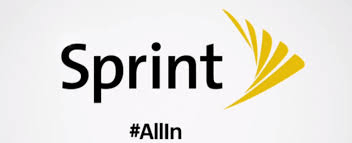 Sprint’s all-new “All-In” wireless plan was supposed to simplify wireless pricing for consumers by bundling a leased phone, unlimited voice, data, and texting for a flat $80 a month, but customers slogging through the fine print discovered speed throttling and roaming punishments were silent passengers along for the ride:
Sprint’s all-new “All-In” wireless plan was supposed to simplify wireless pricing for consumers by bundling a leased phone, unlimited voice, data, and texting for a flat $80 a month, but customers slogging through the fine print discovered speed throttling and roaming punishments were silent passengers along for the ride:
To improve data experience for the majority of users, throughput may be limited, varied or reduced on the network. Streaming video speeds will be limited to 600Kbps at all times, which may impact quality. Sprint may terminate service if off-network roaming usage in a month exceeds: (1) 800 min. or a majority of min.; or (2) 100MB or a majority of KB. Prohibited network use rules apply—see sprint.com/termsandconditions.
Although many smaller wireless carriers also have limits on off-network roaming usage, none have proposed to permanently throttle web videos to a frustratingly slow 600kbps. At those speeds, Sprint customers could expect buffering delays or degraded HD video.
Many customers contemplating switching to the All-In plan considered the speed throttle a deal-breaker and let Sprint know through its social media accounts. Even websites friendly to Sprint were very critical of the plan:
We just aren’t seeing the new and innovative thing with All In. You already have plans that price out the same way as All In (some even less expensive). It appears as a marketing gimmick that is disguising a desperate move to limit streaming. This is not popular with your current customers and your new customers are likely going to hate you for it. After they find out.
.
Marcelo, it’s really bad that David Beckham touts unlimited movie watching and you reference unlimited watching videos in your Press Release. 600kbps video streaming can hardly run any YouTube or Netflix streaming. It will buffer significantly even with the lowest resolution settings. 600kbps is insufficient for most moderate quality video streaming on a smartphone screen.

Claure
Sprint CEO Marcelo Claure got the message and announced late yesterday the video speed throttle was gone, but general network management would remain.
“At Sprint, we strive to provide customers a great experience when using our network,” said Sprint CEO Marcelo Claure. “We heard you loud and clear, and we are removing the 600 kbps limitation on streaming video. During certain times, like other wireless carriers, we might have to manage the network in order to reduce congestion and provide a better customer experience for the majority of our customers.”
Claure has been hinting the days of unlimited data from Sprint may be coming to an end sometime in the near future. Sprint is among the last carriers that offer a truly unlimited experience, and some customers have used Sprint as a home broadband replacement and have created congestion issues as they consume hundreds of gigabytes of wireless data, which can slow Sprint’s network to a crawl in some areas. T-Mobile experienced similar issues and recently updated their terms and conditions to apply a speed throttle after 21GB of usage during a billing cycle.
Unlimited 4G LTE customers who use more than 21 GB of data in a bill cycle will have their data usage de-prioritized compared to other customers for that bill cycle at locations and times when competing network demands occur, resulting in relatively slower speeds. See t-mobile.com/OpenInternet for details.
Customers report in high volume areas speeds drop well below 1Mbps if they are temporarily sentenced to “speed jail.”
Many of those attempting to use a wireless carrier as their primary home broadband connection do not do so because of convenience or selfishness. Often, they have no other choice because they are bypassed by cable operators and not served by DSL. But it does not take too many customers to start creating problems for wireless carriers if a nearby cell tower becomes congested. Online video is probably the most bandwidth intensive application for wireless companies, especially HD video streaming. The growth of video traffic also raises questions about whether AT&T and Verizon’s efforts to move rural customers to an all-wireless phone and data platform will work well for the companies or customers.


 Subscribe
Subscribe
I filed an FCC Open Internet complaint about the 600kbps video throttling back on June 19th.
This morning, I received a call from Sprint’s executive office confirming that they would not be implementing the throttle, and indeed, hadn’t even gotten around to switching it on before they did their about face on the plan.